Add some color to your holiday meal with these mashed Japanese purple sweet potatoes. It's the perfect side dish to wow your dinner party guests. Whip this easy, healthy recipe together in minutes. Your old, regular potatoes will look pale in comparison!
Jump to Recipe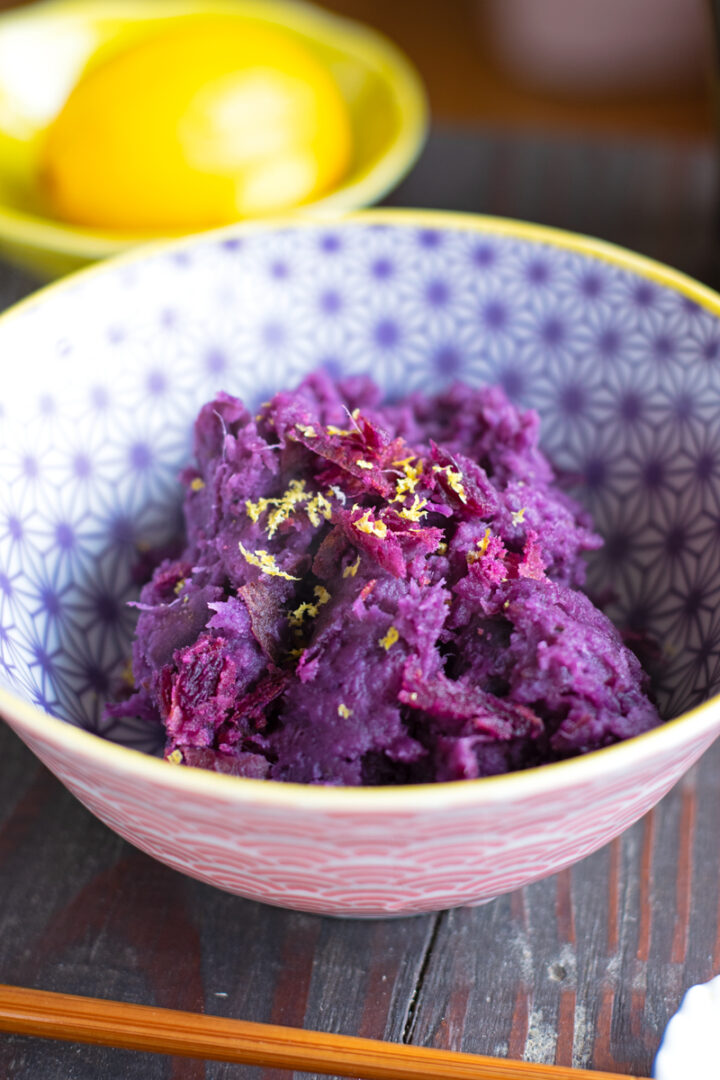
What are Japanese sweet potatoes?
Japanese sweet potatoes are called satsumaimo (さつまいも,サツマイモ). In the world of sweet potato lovers, satsumaimo are prized for their sweetness. The varieties of sweet potatoes in Japan are a different color, flavor, and texture than their orange-fleshed counterparts in the West.
For Japanese people, it's easy to associate satsumaimo with the fall and winter time in Japan. However, most people don't even realize that "Japanese sweet potatoes" originally came from Central and South America. The starchy root vegetable arrived in the southern part of Japan, Satsuma Province, via China in the 17th century. This part of Japan is still well-known for growing sweet potatoes today.
On the outside, they have an appealing reddish-purple skin once you rinse off any soil. When sliced raw, you’ll find the inside is a pale cream color. The one I chopped up tonight had a slight orangish tinge. While cooking, you’ll see it turn golden.
The texture is smooth and firm. Similar to slicing into a baked potato, the inside will be a bit drier and flakier. They don’t have that fall-apart sogginess like your baked orange sweet potatoes soaking in a slab of butter.
Compared to other varieties of sweet potatoes, they’re typically smaller and more slender with tapered ends.
How are Japanese sweet potatoes used?
Japanese sweet potatoes are prepared in many different ways. Try them baked, steamed, fried, simmered, or candied to make daigaku imo. Add them to miso soup, stews, or even use them to make tempura.
If you visit Japan, you’ll discover sweet potato roasted over hot rocks, the beloved yaki imo. It's a common street snack in the winter that has its own jingle: "Ishi yaaaaki imo"! ♫ Yaki imo are traditionally sold out of the back of an economically-sized truck with a wood-burning, built-in furnace.
In the fall, like clockwork, you can find seasonal satsumaimo-flavored desserts at convenience stores like Mont Blanc, ice cream, baumkuchen cakes, and chocolates.
In Kyushu, the southern part of Japan, they're even used to make shochu, a vodka-like, distilled alcohol.
While I used purple sweet potato to make these mashed potatoes, you can definitely use other varieties of satsumaimo too.
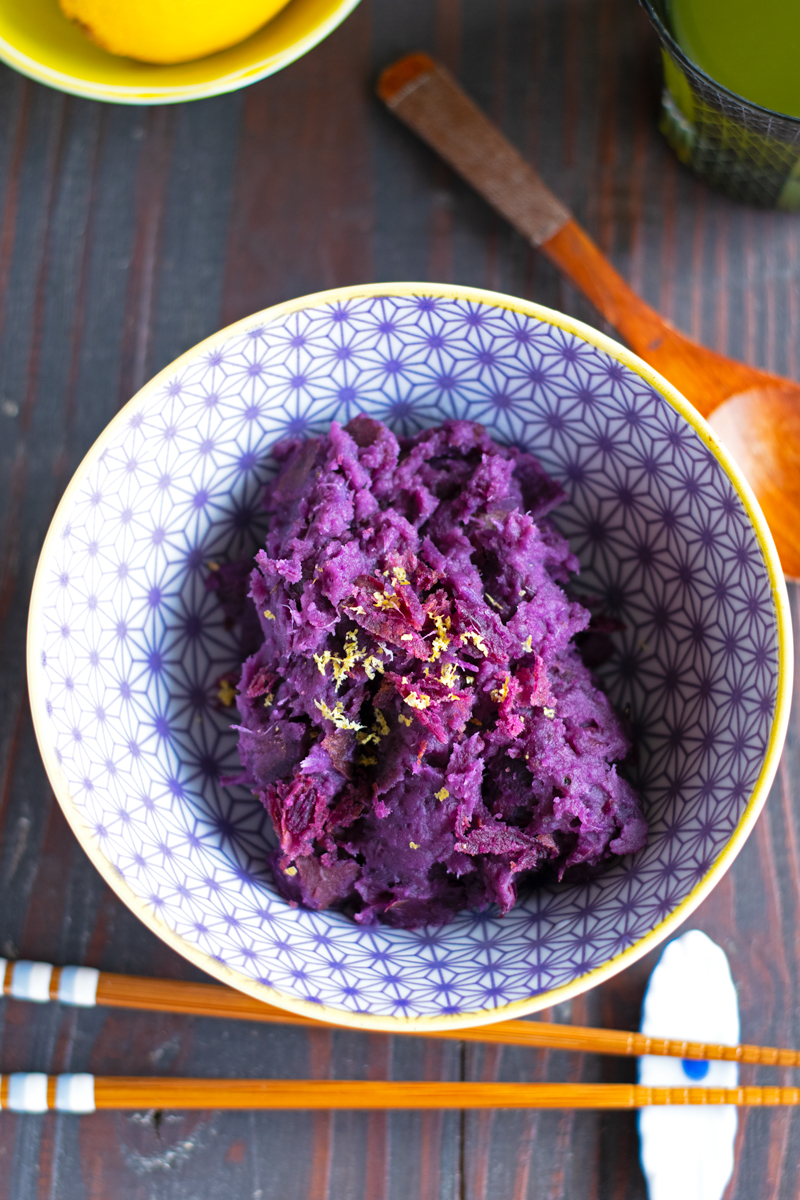
What are purple Japanese sweet potatoes?
In Japan, purple sweet potatoes are called murasaki imo (紫芋). Murasaki imo have reddish purple, brownish purple, or purple-colored skin. When I sliced into one for the first time, I was surprised by just how vibrant purple it was on the inside.
It’s anthocyanin, a chemical compound, that gives them their purple color. One reason they've gained popularity is that they're healthier than regular sweet potatoes.
Even after being cooked, they stay the same bright, beautiful purple color. If cooked correctly, you'll get a soft, creamy texture.
On the outside, murasaki imo look quite similar to other satsumaimo. Taking a bite, you'll notice they aren’t as sweet as satsumaimo or orange sweet potatoes. And the texture is drier and starchy.
They're easily confused with Okinawan sweet potatoes. Okinawan sweet potatoes are also purple on the inside but have a pale white-colored skin.
Murasaki imo were originally cultivated in the south of Japan. Now, they're mostly grown in Kagoshima Prefecture and Okinawa.
Even though the variety is not as sweet, murasaki imo are a popular choice. In addition to home cooking, they’re used to make packaged snacks, bright purple chips, and desserts.
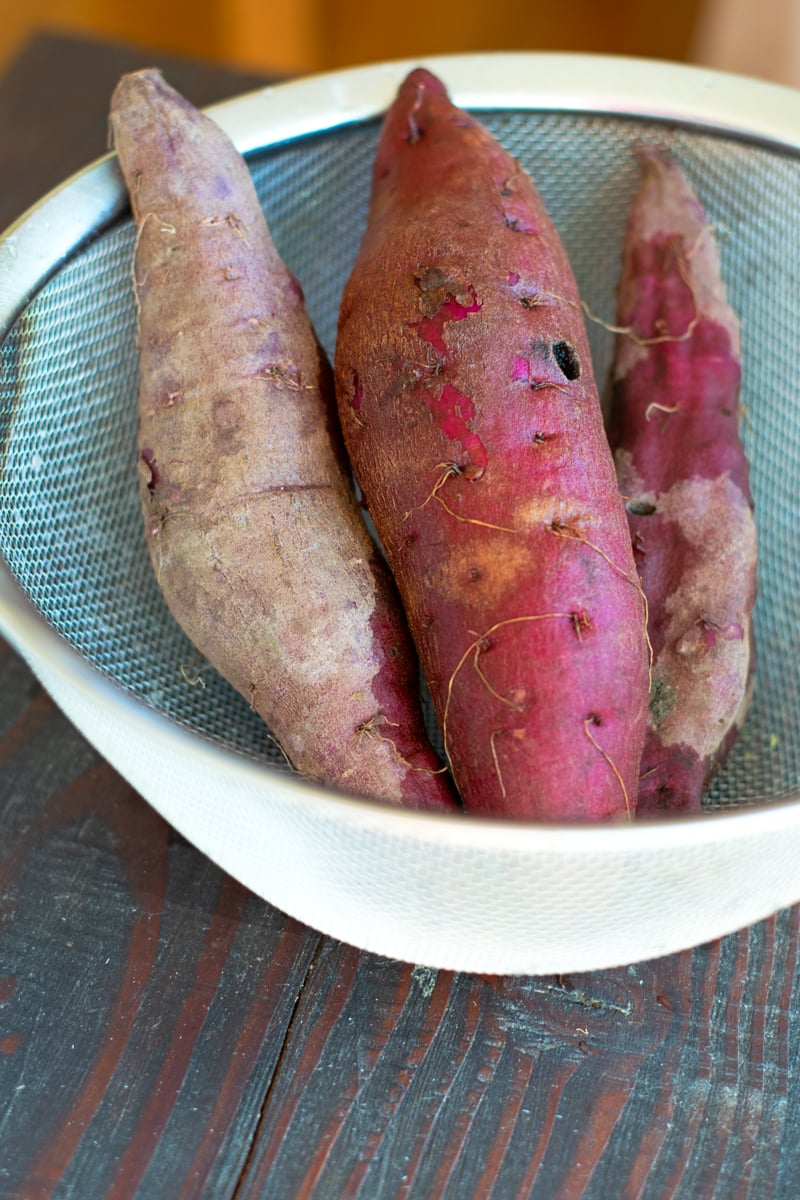
What do Japanese sweet potatoes taste like?
Satsumaimo have an earthy, nutty flavor. Their denseness and creamy texture are comparable to baked potatoes. Though, I would say they're creamier.
A baked Japanese sweet potato is a dessert in itself. You'd likely compare the subtle sweetness to chestnut or caramel-flavored desserts. To me, it tastes like pumpkin pie filling, just less pumkiny, or a dense caramel-flavored cake. It gives you that creamy, melt-in-your-mouth sensation.
A piping-hot satsumaimo is how I'd imagine "chestnuts roasting on an open fire" to smell like. For many Japanese adults, even the smell takes them right back to fond memories from their childhood.
Walking by a yaki imo truck in Tokyo is maybe the equivalent of passing a Cinnabon at the mall in the US. That sweet smell pulls you in until you reach for your wallet and splurge.
What do purple Japanese sweet potatoes taste like?
Murasaki imo, purple Japanese sweet potatoes, are not as sweet. But believe me, they're still sweet.
When baked, you still get that same creamy bite. It's just slightly drier and starchier.
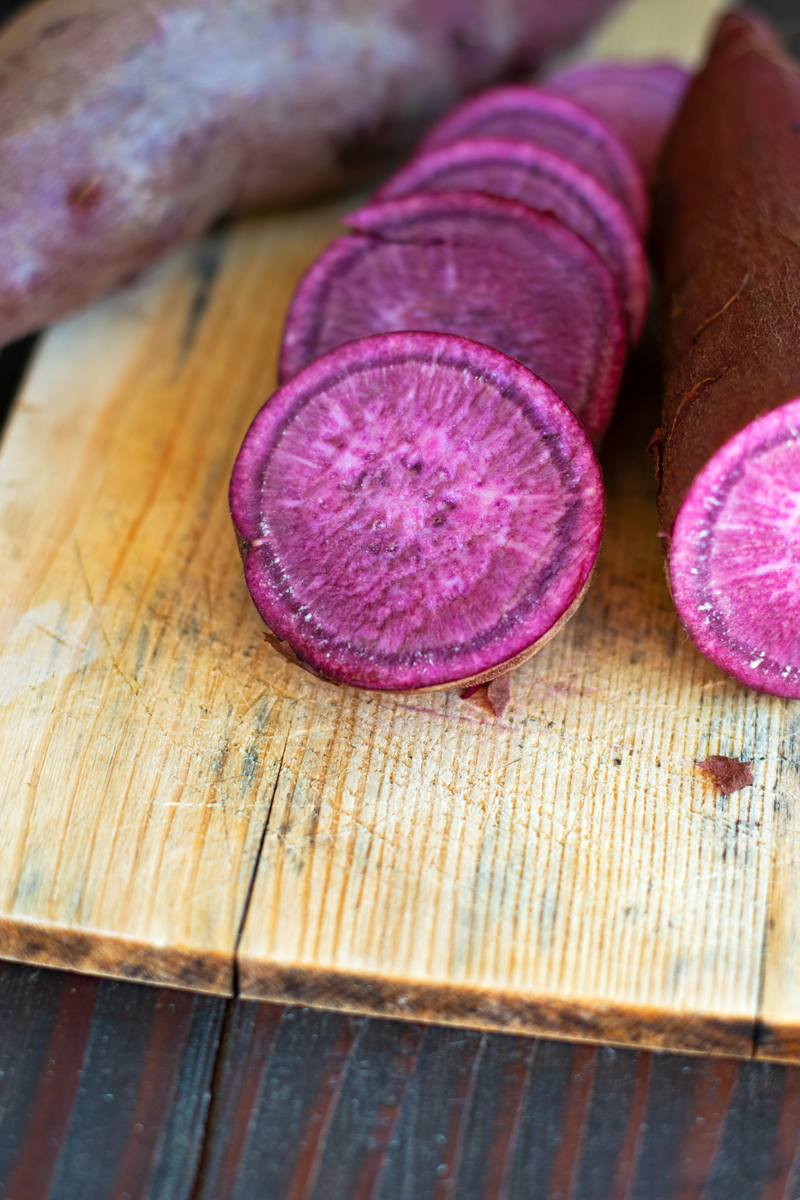
Why are Japanese sweet potatoes healthy?
There are lots of health benefits to adding Japanese sweet potato to your diet. During the fall and winter, I eat satsuma-imo multiple times a week instead of rice or grains.
Japanese sweet potatoes are rich in vitamins, minerals, and dietary fiber. Compared to white potatoes, sweet potatoes contain more vitamin C. Satsumaimo are also a good source of vitamin A, potassium, copper, and manganese.
According to Rumi Nakazawa, a registered dietitian, Japanese sweet potatoes have 10 times more vitamin C than apples. The vitamin C in Japanese sweet potatoes, in addition to boasting your immune system, also promotes healthy skin. Vitamin C is an essential element in making collagen, which makes your skin firmer.
Like other sweet potatoes, satsumaimo contain antioxidants such as beta-carotene.
While all sweet potatoes are high in complex carbohydrates, the carbohydrates in satsumaimo have a relatively low glycemic index (GI). The GI of Japanese sweet potatoes depends on your cooking method. For a lower GI, boil them instead of baking at higher temperatures, which breaks down the starches into sugar.
What's more, the dietary fiber in Japanese sweet potatoes may actually help you lose weight!
Are purple sweet potatoes healthier?
As a general rule, the more vibrant the color of the potato's flesh, the more nutrition it contains.
Like blueberries, sweet potatoes that are purple on the inside contain anthocyanins.
Anthocyanins are a type of antioxidant that has been shown to reduce the risk of several chronic diseases.
Purple sweet potatoes have a lower glycemic index (GI) than orange sweet potatoes.
All sweet potatoes are high in carbohydrates. Eating them can spike blood sugar levels. Despite their nutrition powerhouse superfood status, I keep my portion size relatively small.
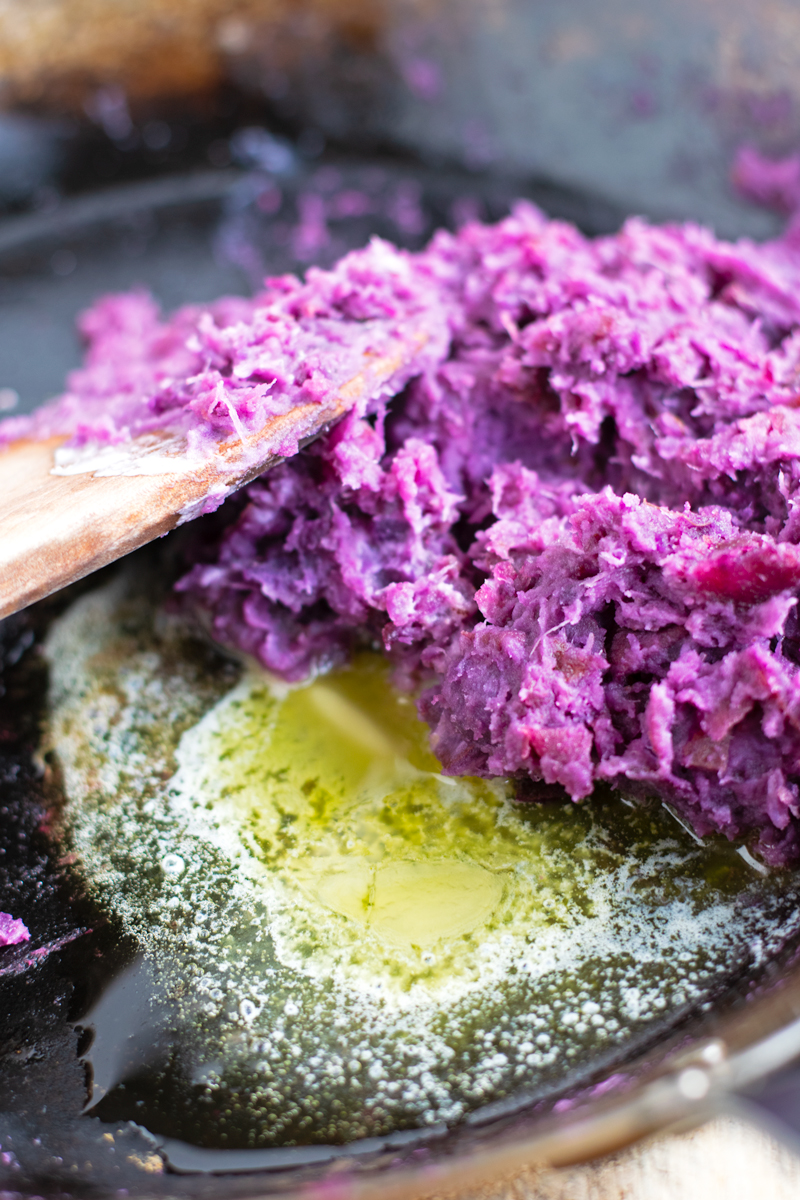
Ingredients
- Japanese sweet potato (purple or regular satsumaimo)
- grass-fed butter
- coconut cream: I would use coconut milk if you can't find coconut cream. I don't use coconut oil.
- sea salt
- black pepper
- honey (optional)
- organic lemon peel (optional)
Kitchen Tools
- knife
- cutting board
- aluminum foil
- oven
- potato masher/spoon/ fork/spatula: any tool that you use to mash potatoes
- fry pan
- zester
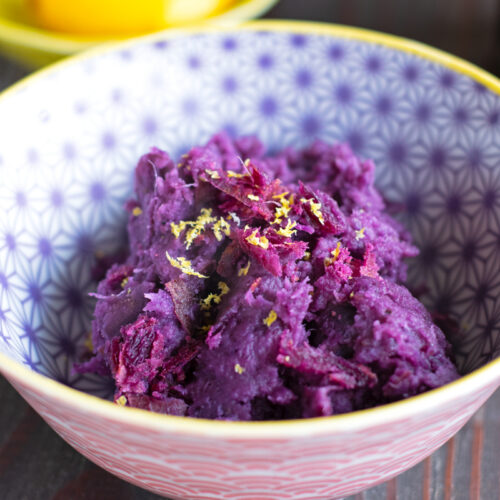
Japanese Mashed Potatoes
Ingredients
- ½ pound Japanese sweet potato (purple or regular) approximately 3 small sweet potatoes
- 1 tbsp grass-fed butter
- 2 tsp coconut cream
- 2-3 pinches sea salt
- ground pepper to taste
- organic lemon zest to garnish (optional)
- ½ tsp honey (optional)
Instructions
Prep
- Wash sweet potatoes under the faucet with cold water. Brush off any soil using your fingers or a gentle brush.
- Dry off with a towel or paper towels.
- Wrap each sweet potato in aluminum foil.
Baking
- Bake at 320 F (160 C) for 35-40 minutes or until soft.
- Remove from oven and let cool.
- Once cool to the touch, slice sweet potato into 1 inch wide slices or just break into pieces using your fingers.
Mixing and Mashing
- Pre-heat fry pan on low heat.
- Add butter to pan.
- Once butter melts completely, add sweet potatoes to the pan.
- Using a spatula, fork, or spoon, mash the sweet potatoes to your desired consistency and mix in the melted butter.
- Spoon coconut cream on top of the mashed sweet potatoes. Stir in with a spatula until the color is uniform.
- Season with salt and pepper. Mix in with a spatula.
- (Optional) Drizzle honey on top and mix in with spatula.
- Serve warm in a bowl.
- (Optional) Zest some lemon peel on top.
Notes
Where to buy Japanese sweet potatoes?
In Japan, you'd have a hard time not finding Japanese sweet potatoes at the supermarket.
In other countries like the United States, with a bit more effort you should have some luck.
Nowadays, farmers in North America grow Japanese sweet potatoes. Two varieties of Japanese sweet potatoes that are grown in the US are murasaki sweet potatoes and stokes. Stokes were originally grown in North Carolina and now in California as well.
Your best bet is to look at a Japanese grocery store such as Nijiya Market or an Asian grocery store. At Trader Joe's, they're a seasonal product.
To buy organic, I would go to Whole Foods or a local coop.
If you have a good farmer's market in town, there's a chance you'll find a bushel or two. I recommend asking around-- farmers are a great resource.
If you don't live near a decent-sized city, you may have to order some online or substitute a local sweet potato instead.
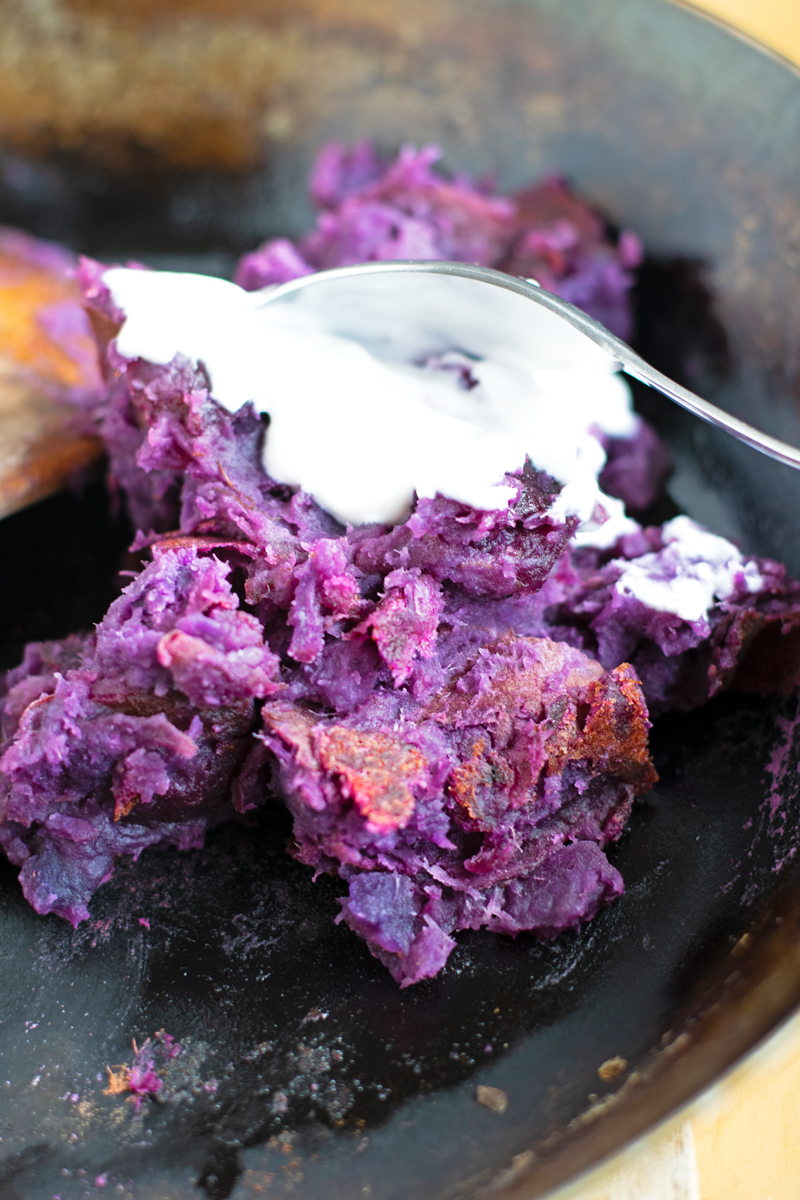
What to serve with mashed Japanese sweet potatoes:
Tradition is tradition. But why not add a little color to your Thanksgiving dinner?
You don't need to replace your regular mashed potatoes and gravy!
I do, however, recommend these purple mashed potatoes to go with your turkey.
Try mashed Japanese sweet potatoes with:
- Healthy loco moco with cauliflower rice
- Bitter melon with eggs (Okinawa-style)
- Ajitamago (marinated ramen egg)
- Korean Rolled Omelette
- Citron tea
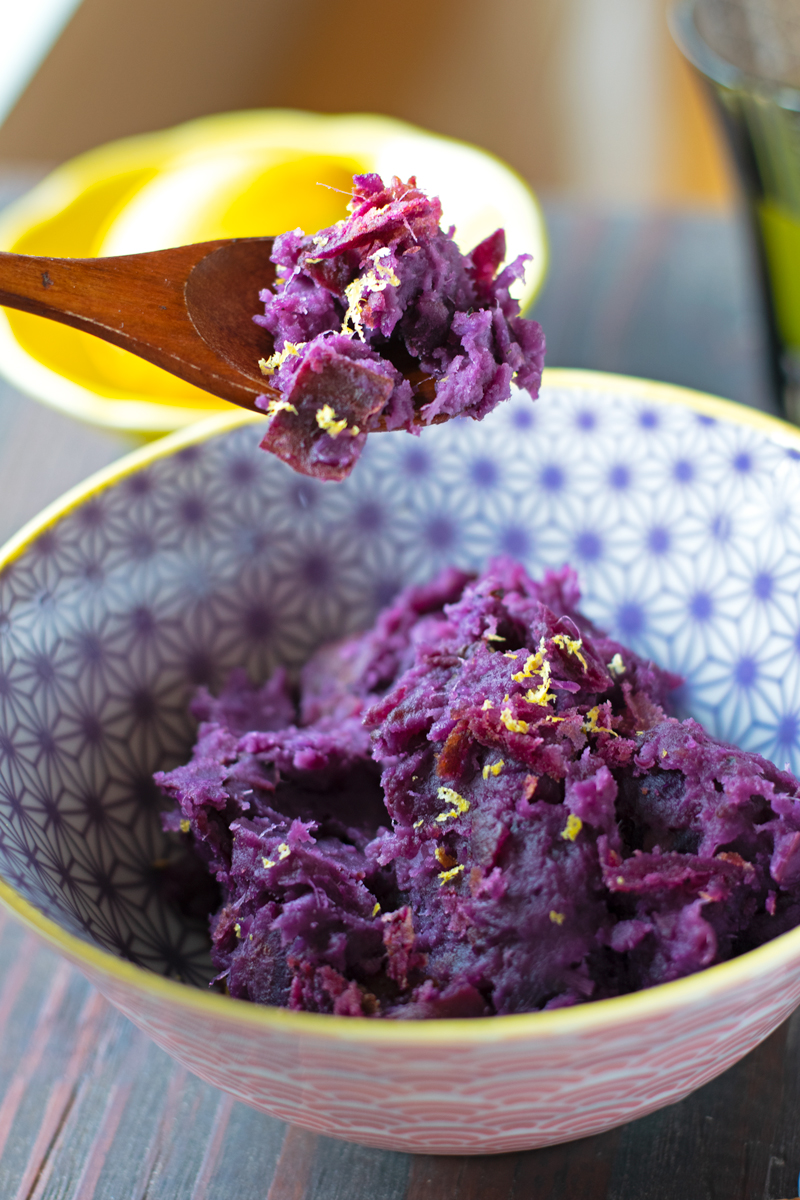


Leave a Reply